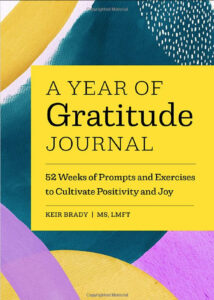Connection and autonomy are essential components of a healthy, secure relationship. When things are going well, it is easy to navigate the conflicting needs of spending time together and spending time apart. However, when things become stressful due to life transitions, illness, or other concerns, balancing these needs can be hard. This is especially true when one person pulls their partner close, and the other pushes their partner away. When this happens, a relationship pattern known as pursuer/distancer can develop. If the pursuer/distancer relationship pattern becomes an ongoing part of the couple relationship, it could be difficult for the relationship to survive.
The Pursuer/Distancer Pattern
A pursuer/distancer relationship pattern can occur when a couple experiences relationship stress. There is a struggle between the need for closeness and the need for distance. When the pursuer experiences relationship stress, they turn to their partner for increased closeness and reassurance. The distancer feels overwhelmed by their partner’s pursuit and withdraws to relieve anxiety. The pursuer then increases their efforts to ease their own anxiety, often through criticism, anger, and making more demands. This causes the distancer to withdraw further and respond critically to the added demands, while avoiding their partner by increasing involvement in other areas of their life. The pursuer can eventually feel defeated and withdraw from the relationship, becoming the distancer. The distancer can then fear that their partner will leave the relationship, so they take on the role of the pursuer, and thus the pattern continues. While this can be a normal pattern in relationships during times of stress, it can be problematic if it becomes entrenched. When this happens, the behavior of one partner triggers and perpetuates the behavior of the other.
An Example
The pursuer/distancer pattern can cause a lot of problems for a couple and can interfere with their ability to maintain a loving connection. For example, a couple is sitting on the couch together watching television. The wife turns off the television and asks her husband what’s wrong. The husband says nothing is wrong, he was just trying to watch the show. The wife gets upset and tells the husband that he always shuts down and he never shares his feelings with her. The husband says that he doesn’t know what she is talking about and that she is overreacting. The wife tells the husband that he is cold and emotionless and probably doesn’t even have feelings. The husband says he has work to do and leaves the room. Either partner can assume either role. This can also change over time or in different situations. This relationship pattern can be extremely destructive. It can lead to divorce or separation if this pattern continues to be a regular part of the relationship.
Pursuers
The partner that is the pursuer tends to enjoy talking about their feelings with their partner and needs emotional closeness. When problems arise, they react quickly and emotionally. The purser often has an anxious attachment style and requires a lot of reassurance from their partner. They need a lot of affection, connection, and attention from their partner in order to feel secure in their relationship. Expressing feelings comes easily to pursuers and they crave a deep connection with their partner. They can be emotionally intense and highly sensitive and are very attuned to the slightest hint of rejection. When their partner requires space, they can take it as a personal rejection and can resort to nagging, criticism, and blaming in order to ease their anxiety and try to force their partner to reconnect. This behavior often pushes their partner even further away.
Distancers
The distancer values independence and requires a great deal of personal space. When problems occur, they like to think things through, and avoid uncomfortable emotions by engaging in compulsive behaviors. They often have an avoidant attachment style and require emotional and physical space when relationship anxiety is high. Autonomy is highly valued and it can be difficult for them to identify their feelings and express vulnerability. Although they also value connection, distancers can feel overwhelmed by their partner’s pursuit as they need to feel emotionally safe to establish and maintain a connection. To avoid feeling emotional pressure and to protect both themselves and the relationship, they minimize their partner’s concerns, shut down and go silent to avoid conflict, and withdraw from their partner. The distancer responds to their partner’s pleas for connection with rationality, which can cause their partner to feel rejected and misunderstood.
The Attraction
Pursuers and distancers are often quite drawn to one another as they each have what the other lacks. Distancers can view pursuers as being passionate, direct, and ambitious. Pursuers, on the other hand, see distancers as calm, self-reliant, and confident. When trouble occurs, the natural opposite reactions of the pursuer and distancer create anxiety for their partner. This anxiety reinforces the pattern and the pursuer becomes more insistent on connection and increases their emotional response, while the distancer responds to the increase in intensity by withdrawing further. Each time a problem arises, the pattern becomes more deeply ingrained.
Breaking The Pattern
Breaking the pursuer/distancer pattern requires each of the partner’s to give a little. The reality is that everyone needs both autonomy and connection. Relationships require give and take and asking for what you need. Understanding and addressing the attachment needs of your partner during times of relationship stress can stop the pursuer/distancer pattern. It takes a willingness to acknowledge the pattern, directly ask for what you need from your partner, and alter the automatic response that occurs when relationship anxiety takes over.
What Pursuers Can Do
Since the pursuer is often more concerned about the distance in the relationship and more motivated to fix it, changing the pattern often starts with them. The pursuer needs to find a way to stop the chase. The pursuer can acknowledge their needs and clearly state what they are. Instead of turning towards the relationship to meet all of their needs, they can create a rich experience outside of their relationship and begin to meet some of their own needs. When they can learn to self-soothe, they can calm their relationship anxiety and decrease the demands and criticism. By embracing their own need for independence, they can turn to their partner for interconnection, instead of turning to them to relieve their anxiety.
What Distancers Can Do
The distancer can also change the relationship pattern by focusing on their own behavior. Distancers can schedule a time to connect with their partner, both emotionally and physically. Scheduled connection time also allows for scheduled alone time. When the pursuer knows that there is a scheduled time for connection, it can decrease their anxiety about the relationship and their need to pursue. The distancer can start being more vulnerable with their partner. They can share their day, their feelings, and thoughts, and actively listen to their partner. They can ask for space and time to think about an issue their partner has brought up if needed. When asking for time and space, they should let their partner know when they plan to discuss it. When the distancer is able to support their partner in times of stress, instead of withdrawing, the couple can achieve a greater balance between independence and togetherness.
The pursuer/distancer pattern becomes a concern when it becomes entrenched. When you notice the pursuer/distancer pattern becoming more prevalent in your relationship, stopping it will be important to the health of your partnership. If you find it difficult to stop this pattern on your own, couples counseling can help. Learning how to acknowledge and meet each other’s attachment needs without falling into this destructive pattern, can help you create the successful relationship you want.



